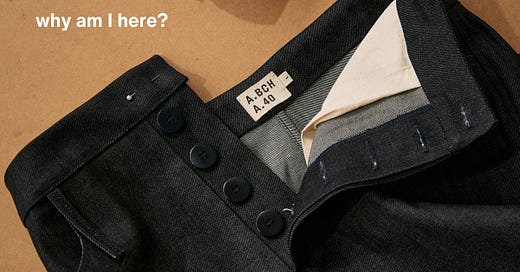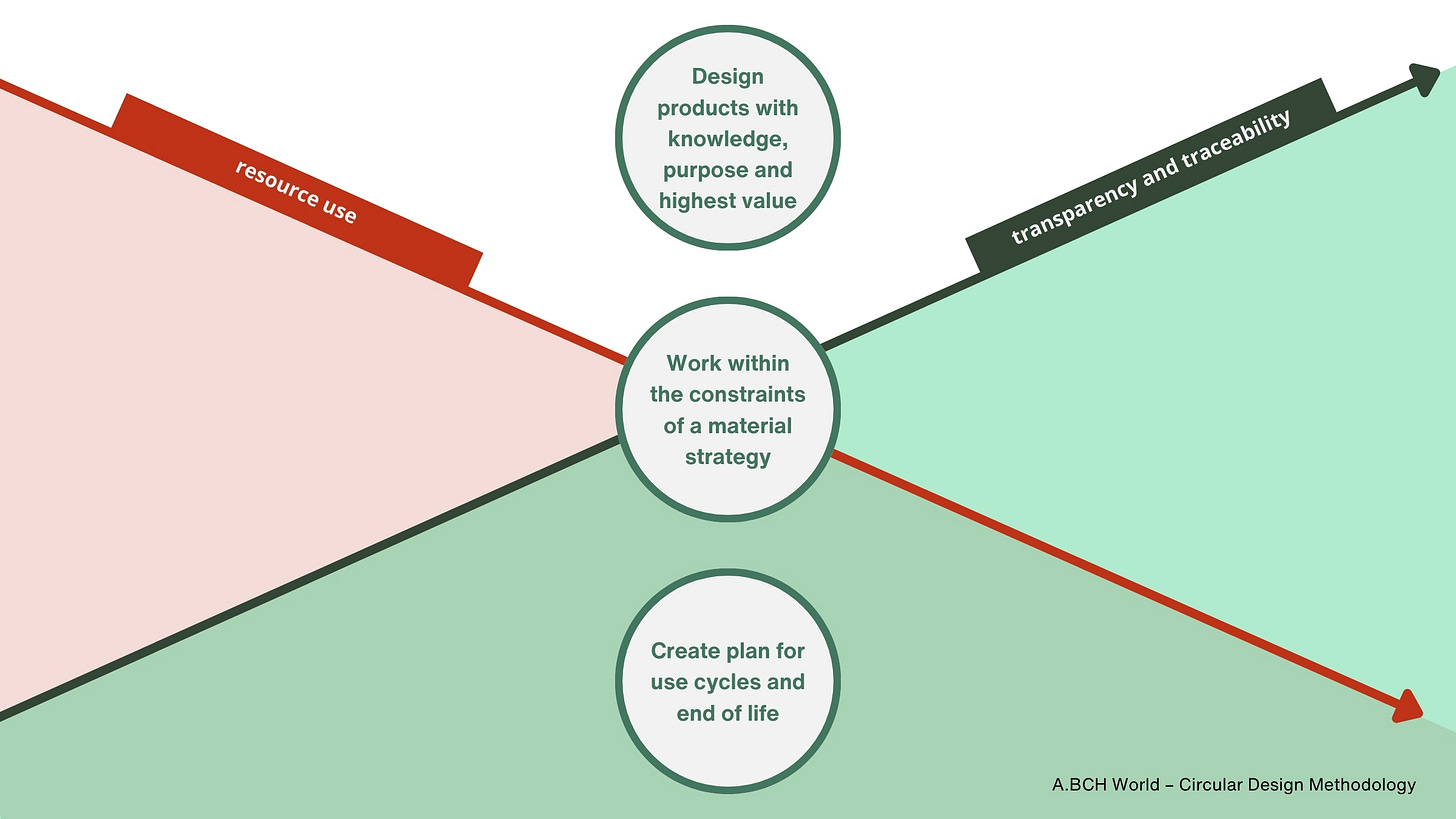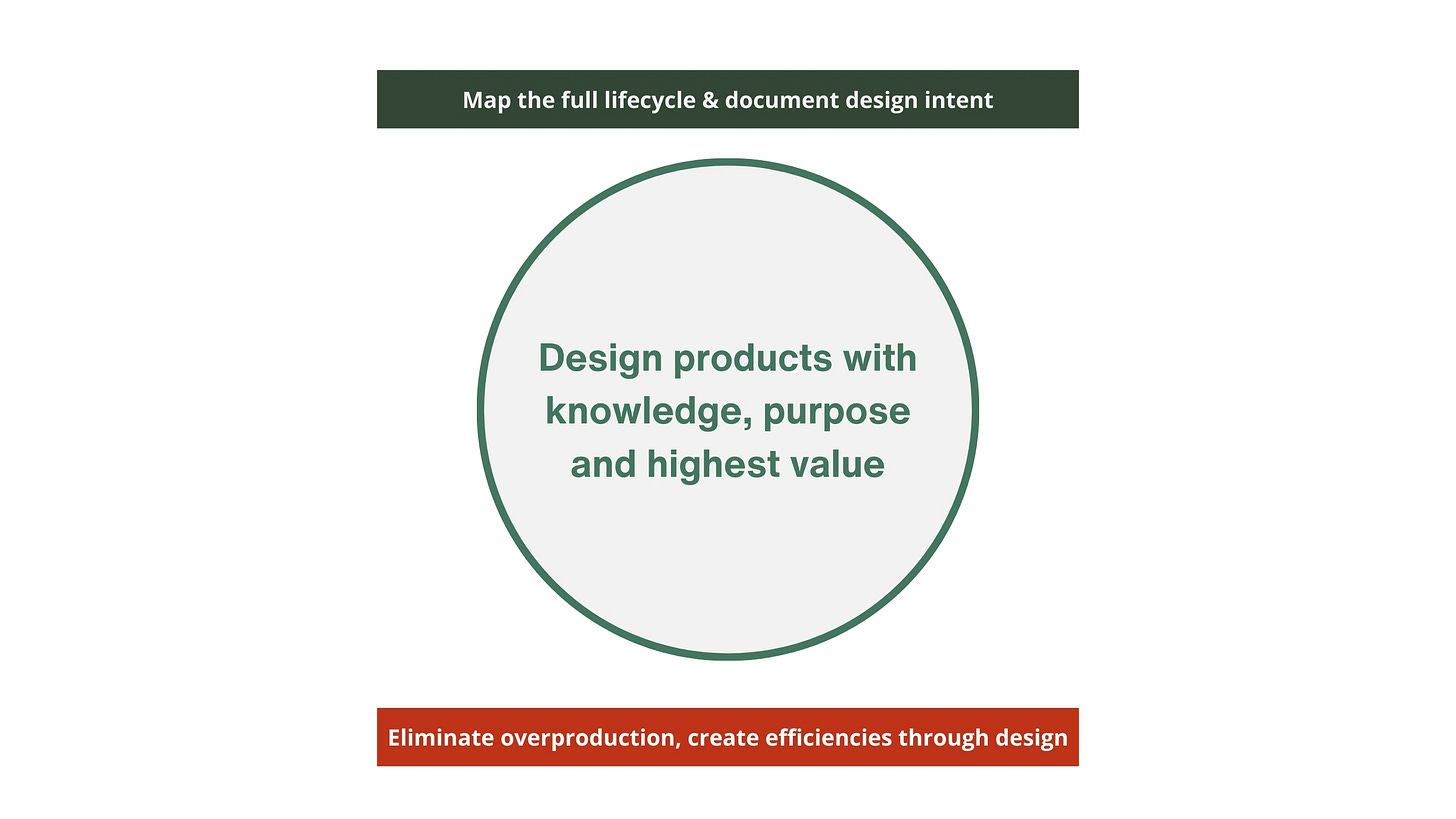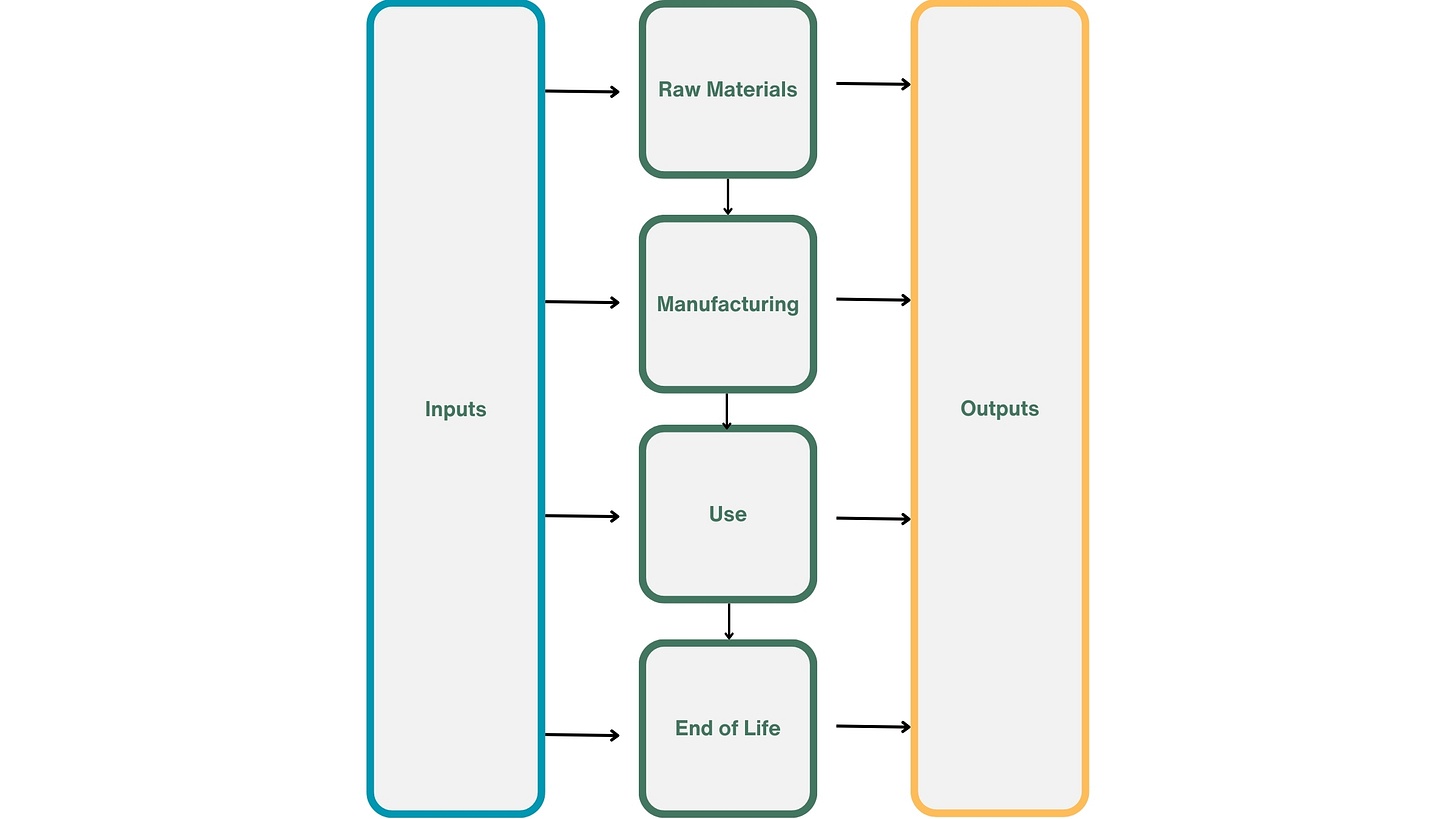Circular Design 101 - part 2
How might we regenerate nature through design? A four-to-five-part series.
If you missed part one, I do highly recommend it for background and context. I’ve linked it here:
Circular Design 101 - part 1
For the past eight+ years, I’ve practiced circular design through experimental clothing label A.BCH. Over this time, I developed a circular design framework to help with the implementation side of circular design. I did this because I see a lot of theoretical stuff out there and practice-led work can be very narrowly focused. I wanted to create a framew…
If you’re up to date, hello and welcome back! I want to acknowledge that I originally called this a two part series, but as I started getting into the detail, I realised we needed more time and space. It will now be a 4-5 part series and here’s the updated overview:
Part 1: Intro
Part 2: Design products with knowledge, purpose and highest value
Part 3: Work within the constraints of a circular material strategy
Part 4: Create a plan for use cycles and end of life (at the design stage)
All I can say is I promise this will be better and it’ll give you time to digest each of the stages more thoroughly - perhaps even spark some good discussion.
Let’s dive straight in shall we? Remember the focus of this series is on Product Design (Circular Business Models and Systems will be for another time as there is much to unpack there too).
Design to Regenerate Nature - How do we do it?
You’ll recall that there are five key circular design actions that we, as designers or product developers, can take to design for circularity to regenerate nature. The first three are individual product design actions and the last two are ongoing process steps that include both an increase action and decrease action. Here they all are.
Product Design Actions:
Design products with knowledge, purpose and highest value
Work within the constraints of a circular material strategy
Create a plan for use cycles and end of life (at the design stage)
Ongoing Process Actions:
Increase the transparency and traceability of materials and products
Decrease resource use (eliminate use of virgin non-renewable resources)
Stage 1: Design products with knowledge, purpose and highest value
In this article, I’ll be covering a high level overview of this first stage in the process - acknowledging that the stages are not linear as such and we’ll likely find ourselves overlapping and looping back several times throughout each of the stages. So, let’s zoom in.
Designing products with knowledge, purpose and for highest value is a three-pronged skill. It requires a deep curiosity for how things are made, an even deeper understanding of how things are worn and perhaps deeper still, how value is created, shared and maintained throughout a product’s lifetime.
To design this way, you’ll need to begin mapping out the entire lifecycle of your product, from raw materials, to manufacturing to use and end of life. How do you want your product to flow through this lifecycle? What is the supply chain? How is the process important to the final product? Who will use the product and how?
Map the lifecycle - it’s actually fun! Break it into these four sections to start and then expand on all the processes involved in your product from there. Go deeper by adding in logistics and packaging.
In the Use section, mapping how your product will be used by your customer helps to cultivate something I’ve been referring to as Design Durability. Side note: I’d love to know if you’ve come across another term out in the universe that already encapsulates this thinking? Feel free to drop a comment if you do - love to hear any thoughts! Personally, I haven’t found another term that’s just right, so here’s my definition…
Design Durability draws on three things: physical durability (how well and long something holds up materially), emotional durability (the sentimental attachment to possessions that may cause someone to keep and care for things over time) and longevity of design (a trend-defying and reputational quality cultivated through excellence within a brand’s products - an obvious example might be Burberry trench coats or Hermès handbags - you could also think of these as classics).
My thinking is, when you approach design with a high level of intent to understand and produce for each of these durabilities, a certain rigour is created around the why of the product, leading to higher quality and beauty in the cut, fabrication and finishes of a garment. And that matters because we do not need more shitty clothes in the world. Circularity won’t be achieved by getting better at recycling and making ever more garbage clothing, but we do have shot through Design Durability.
Now, back to the lifecycle map. Completing this will help you visualise where to look in the supply chain to ensure your processes are traceable and known to you as the designer. If you don’t know where a product or material came from, who made it, or how, then it’s time to get researching! Only once you can achieve a clear view of your entire supply chain, will you be able to articulate it clearly and transparently to your customers and regulators.
Mapping also provides an opportunity to identify where you might create efficiencies in production processes, material use or logistics. So the next stage is to create a list or flow of inputs and outputs. This what goes into every process and each stage and what comes out. Inputs could be raw fibre, yarn, water, chemicals - anything you need to make your product, while Outputs are the leftovers post-process - think spent dye, offcuts, post consumer garments etc.
This helps you begin to unpack and understand the system of production models and shine a light on inefficiencies, like unsold stock, surplus textiles and industrial wastes that could be used as beneficial resources. Investigate your own inefficiencies and make a plan to reduce them.
If your sell-through rate for perfectly good stock is not 100% then you’re over producing. Consider introducing made-to-order or an on-demand model of production. If those are new concepts to you, trials, experiments and pilots can help you get started and iron out kinks as you go. Those experimental phases can create opportunities for internal and external innovation to reduce waste and keep raw material liquidity - which is a much more flexible stock type than ready made garments (I’d like to do a whole other post on this, but as an example see what we can do with fabric or yarn at Circular Sourcing that we couldn’t do with 5,000 unsold skirts).
You probably won’t get it perfect the first time through, so come back to this stage and revisit it over and over through the circular design process, tweaking and improving as you go.
Finally, look at your map and think about how the product and its materials can be designed for highest value through your entire value chain to set shared value creation in motion. What do I mean by this? I mean that anyone who has custody of your product during its lifetime (whether yourself, your customer, charity shop, repair agent, remanufacturer or recycler) will be able to share in the value that product offers, either as a new product, a reused one or as raw material constituents. For example, the textile recycler should be pumped to receive your garment at end of life, because of the value she can get from recycling it into a new product.
This is after all, how nature does circularity. Nothing is wasted and a whole system can share in value creation of a material as it moves through its lifecycle.
Inevitably, designing for highest value should increase both the material and construction quality of your product and you should have a sense of what kind of materials and finishes will be required in order to achieve this.
Now you’re ready to craft a product purpose statement covering why, how, when and where your product will be used. Essentially - does this product need to exist? If the answer is no, it’s time to rethink, make changes and ask questions. Why are we putting this into the world? If yes, highlight this in the use stage of your product map and note down the considerations you might need to make once you get to the material strategy stage – which we’ll be covering next in the series.
In your product purpose statement there are no wrong answers (yet). The point is to get you thinking differently from the outset and, with time and practise, you’ll find what works for you.
So how does this contribute to regenerating nature?
I’ll come back to this question at the end of each post in the series, because it’s good to reground ourselves in the purpose. In the first stage, we’re taking a step back into the psychology; rethinking how we design something so we ultimately shift our relationship to materials and clothes, both as designers and wearers. As we move into shared value systems, we’ll be able to reclaim really good materials at scale - instead of wasting really bad ones at scale. This takes the pressure off mother nature’s natural systems while cultivating a collective mindset that’s deeply knowledgeable and respectful of the value she shared with us in the first place.
Thanks for being here. Until next week,
Courtney
If you got this far and you’re wondering, how do I go deeper? Just keep in mind this series is a high level overview to get people started and is peppered with my tips, thoughts and ideas. This stuff takes a fair bit of time, work and even specialist assistance in the implementation.
The Refashioning Circular Design Guide will be on a whole other level as it is extremely detailed and instructional. It was developed in collaboration with RMIT University (project lead) alongside myself and
. Our brand partner, Country Road Group, tested and used the guidelines internally and the project was supported by Sustainability Victoria.The Refashioning Circular Design Guide is set to launch as an open-source tool on March 4th 2025 at Melbourne Fashion Festival. This is going to be your number one companion in designing and implementing circular design - whether you are an indie designer, part of an SME or you’re designing or product developing for one of the big guys. I’ll remind you when it’s live.









